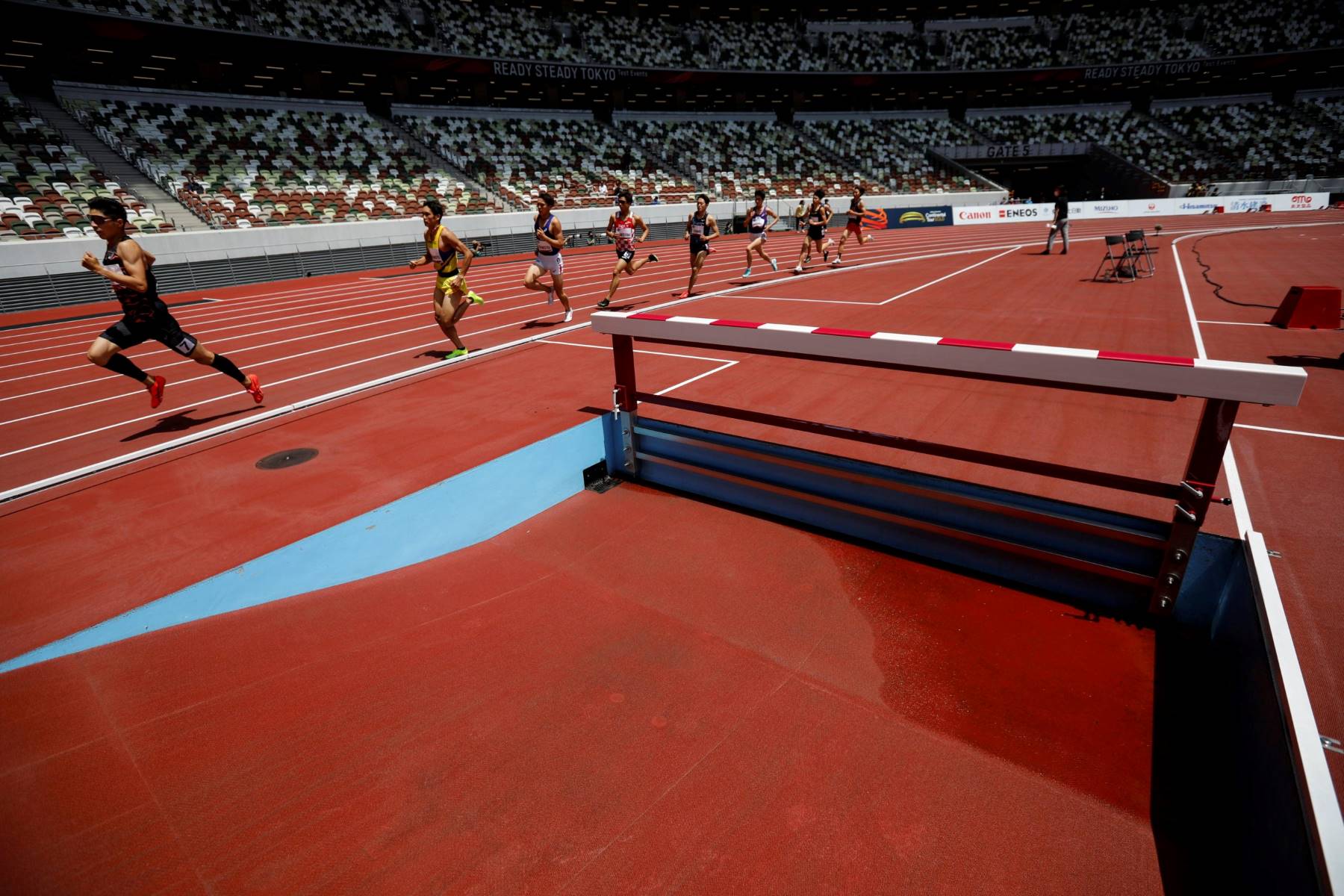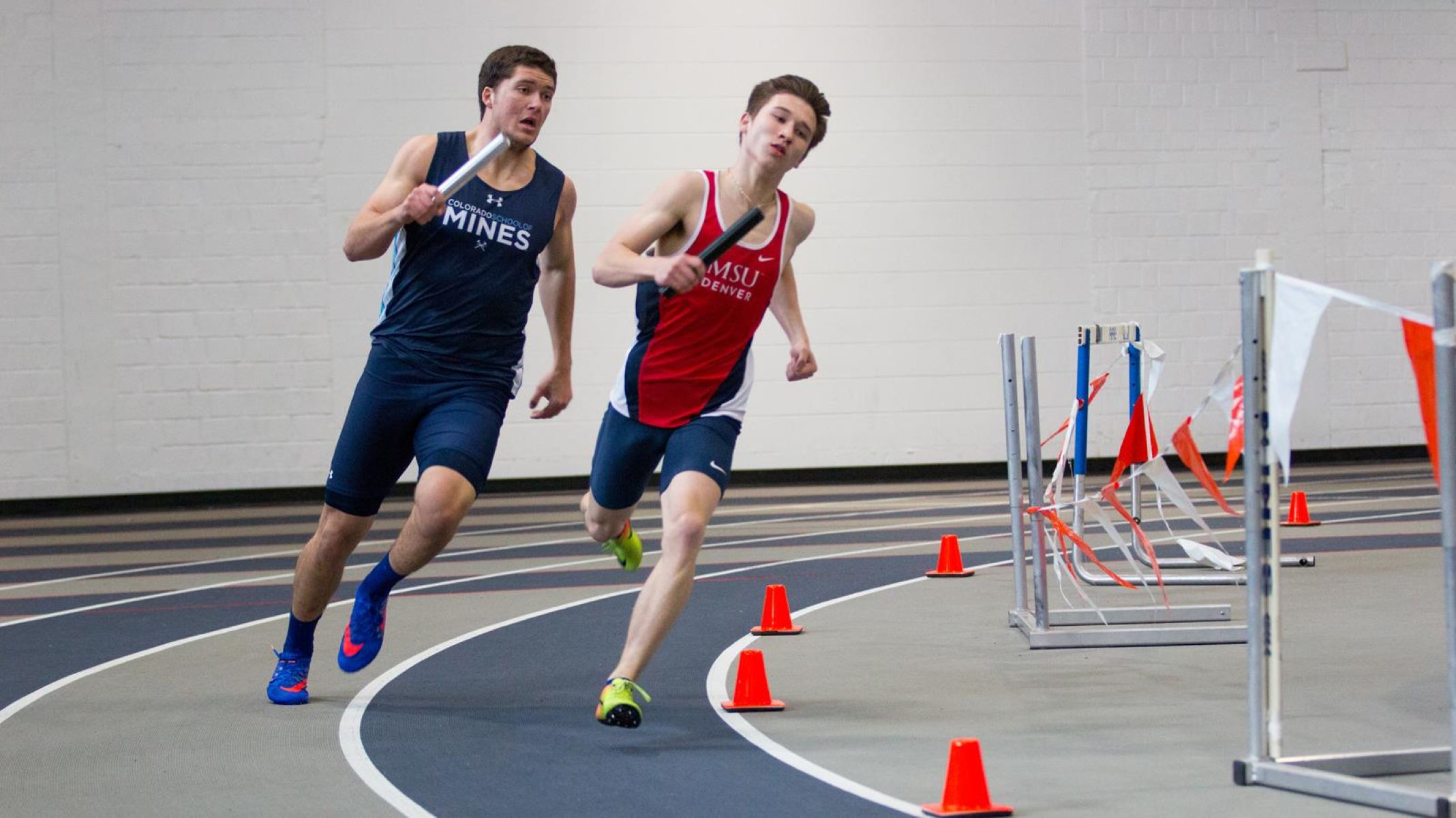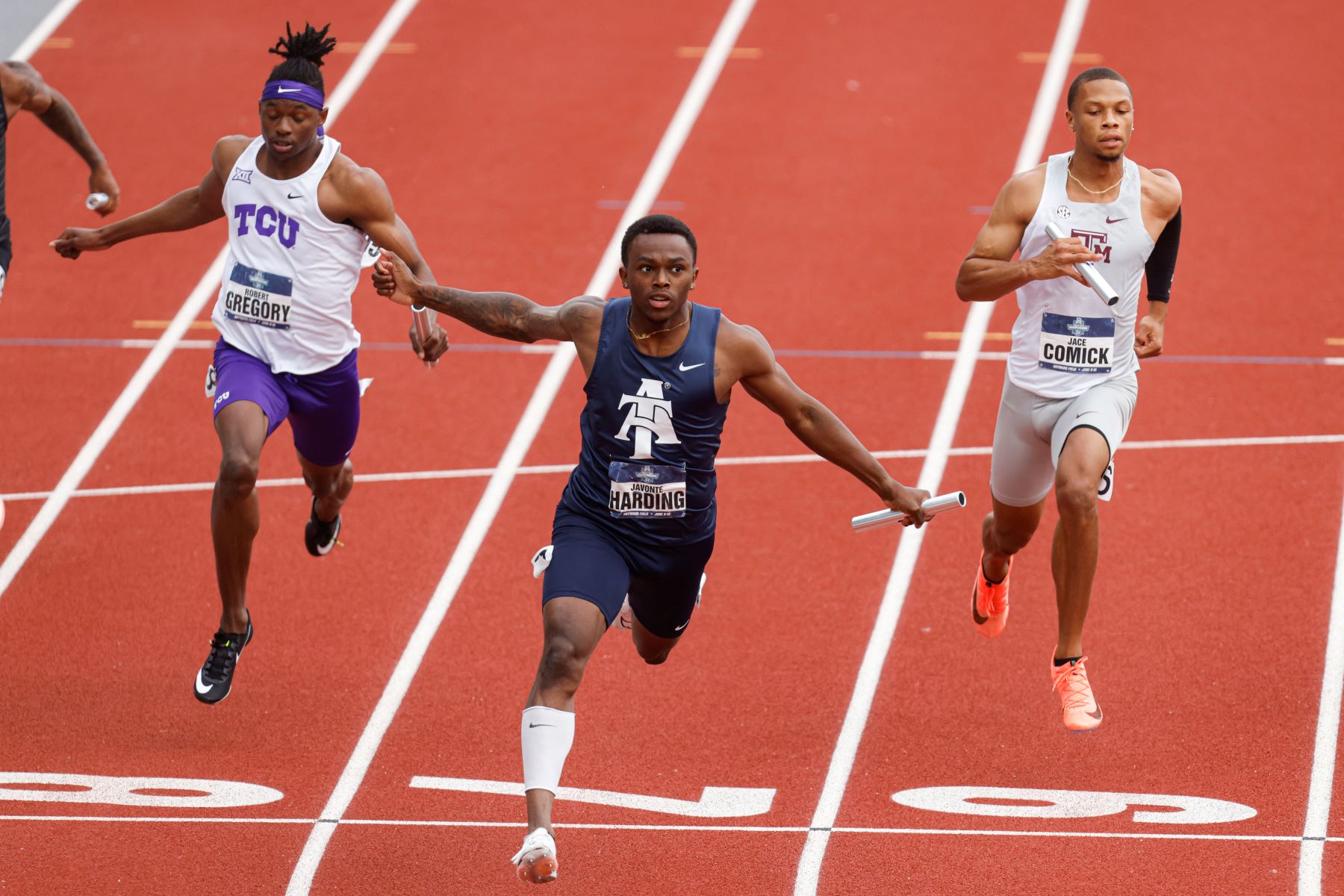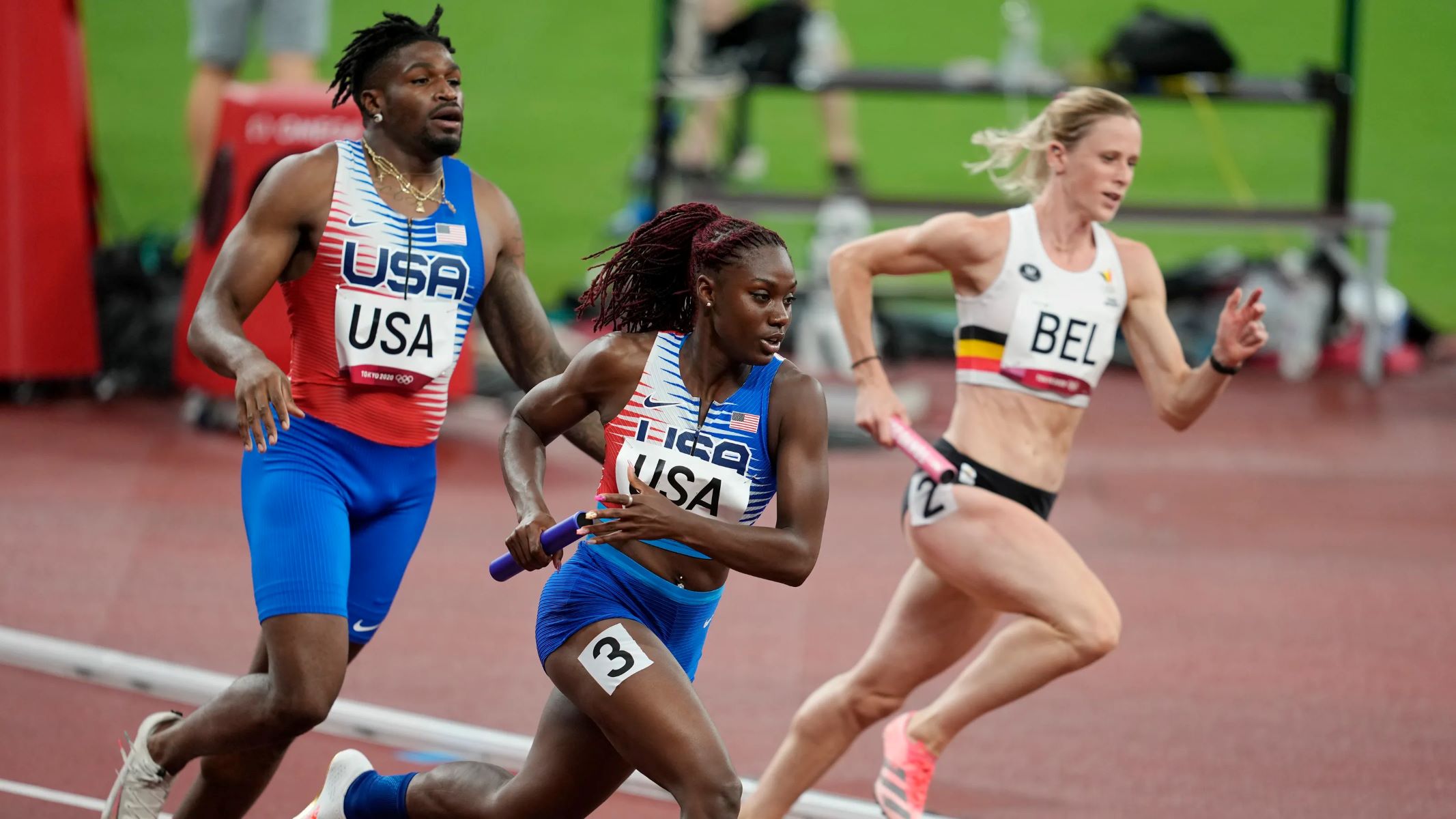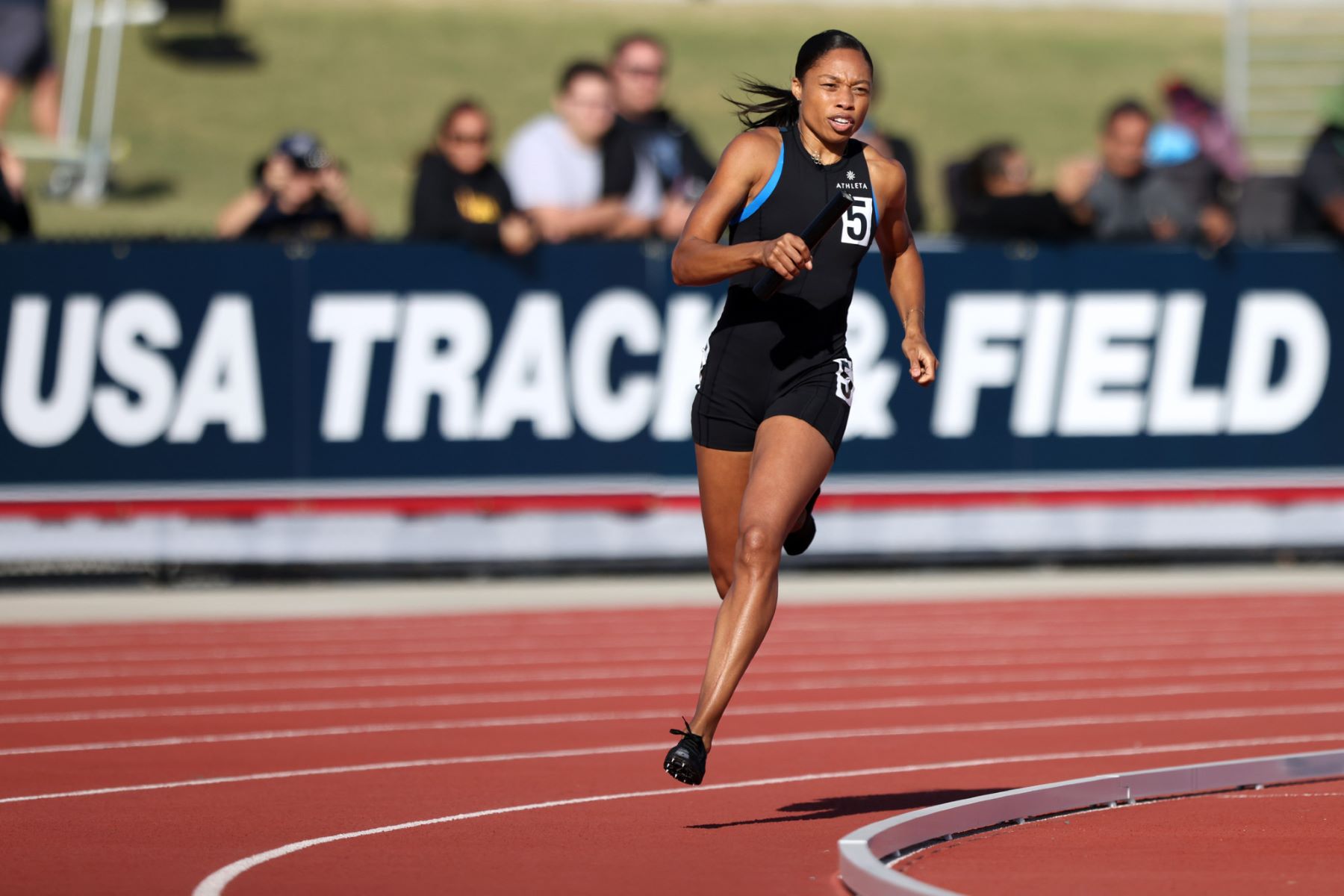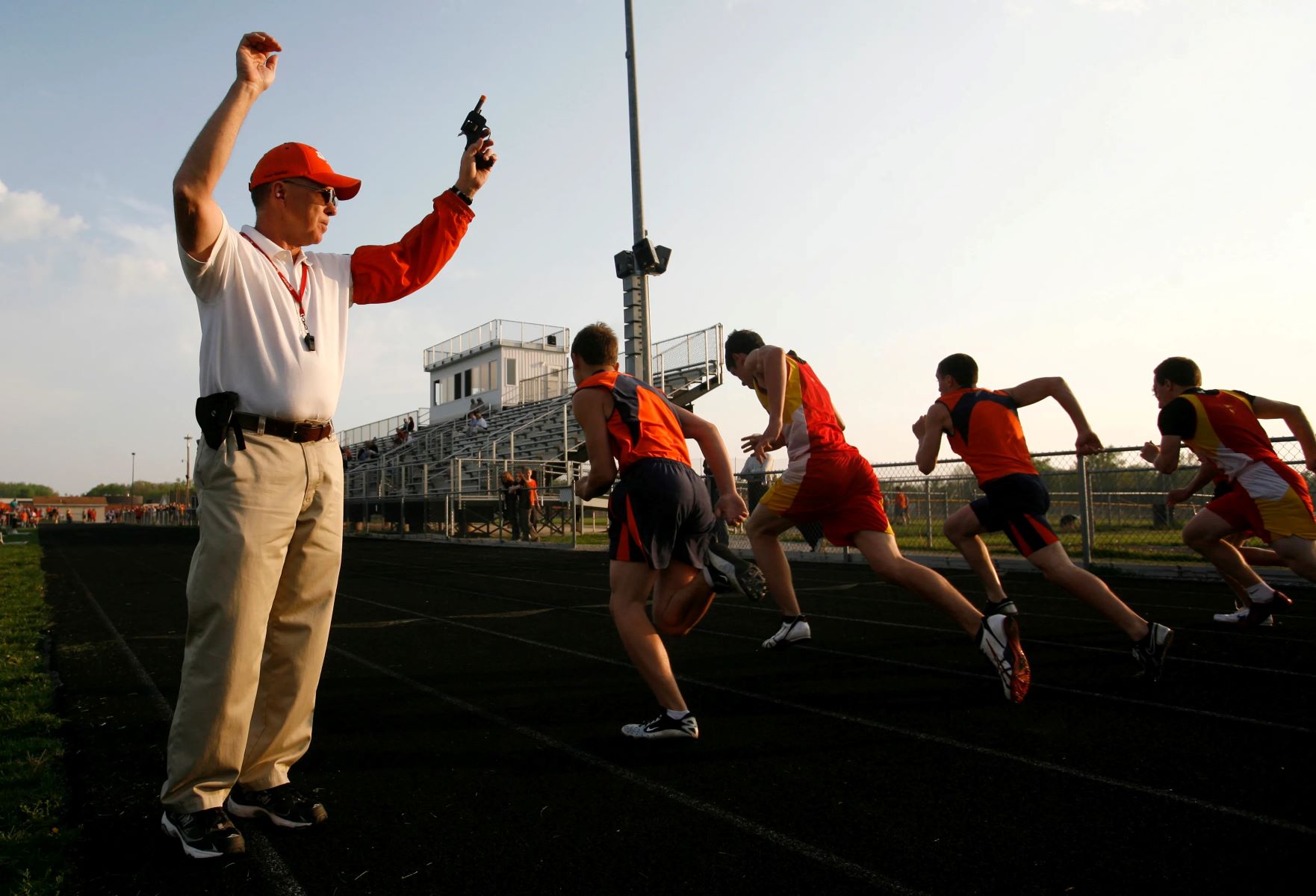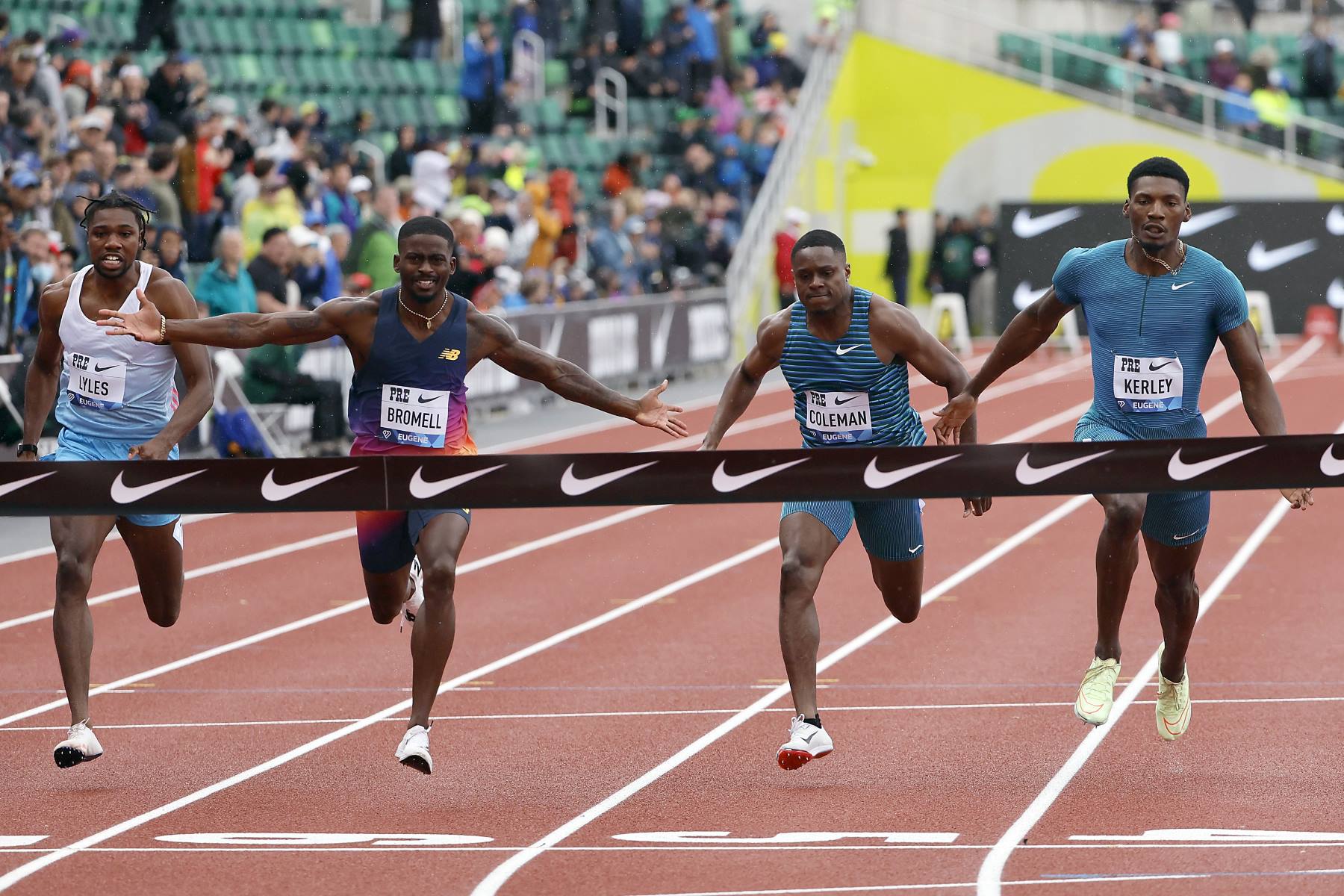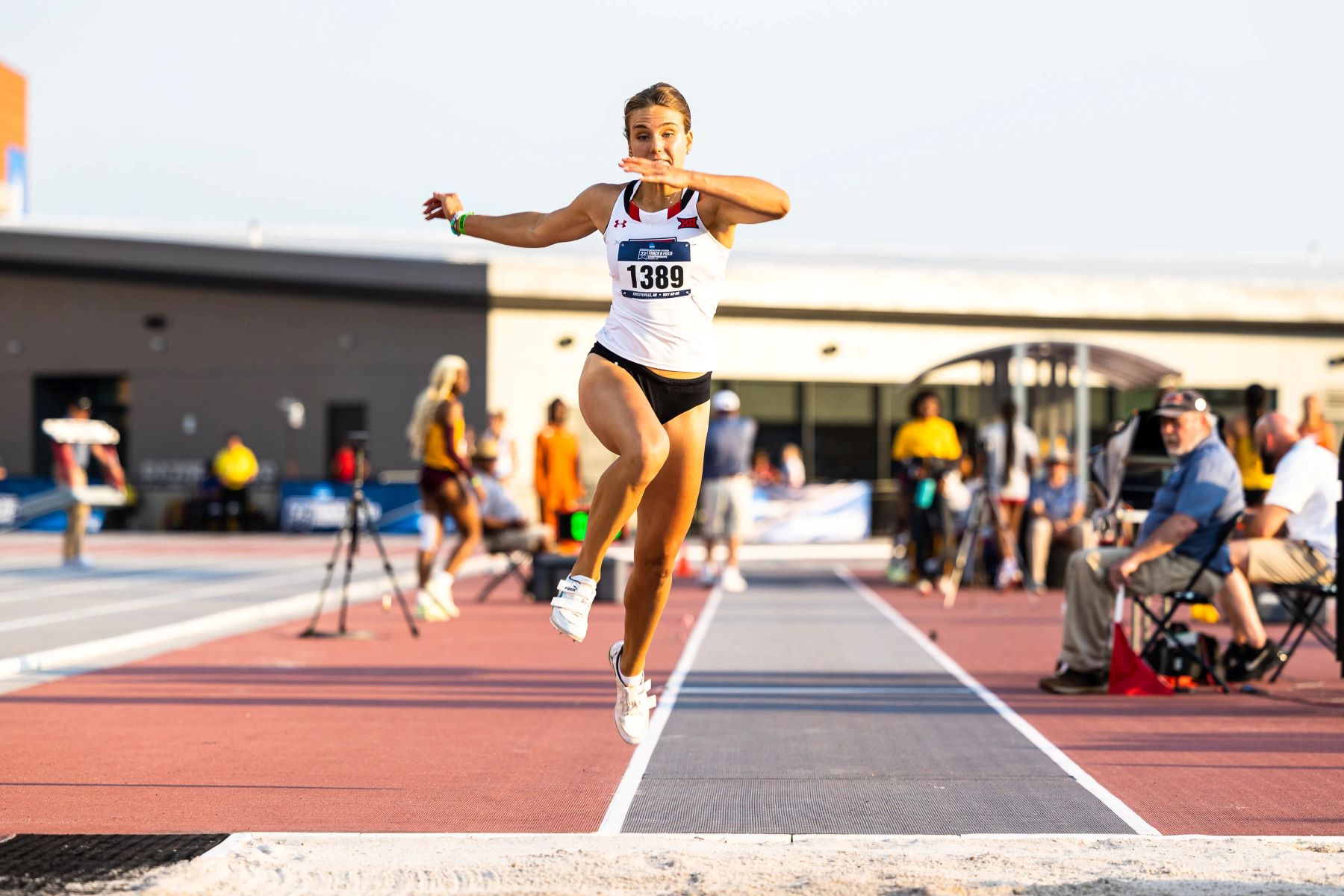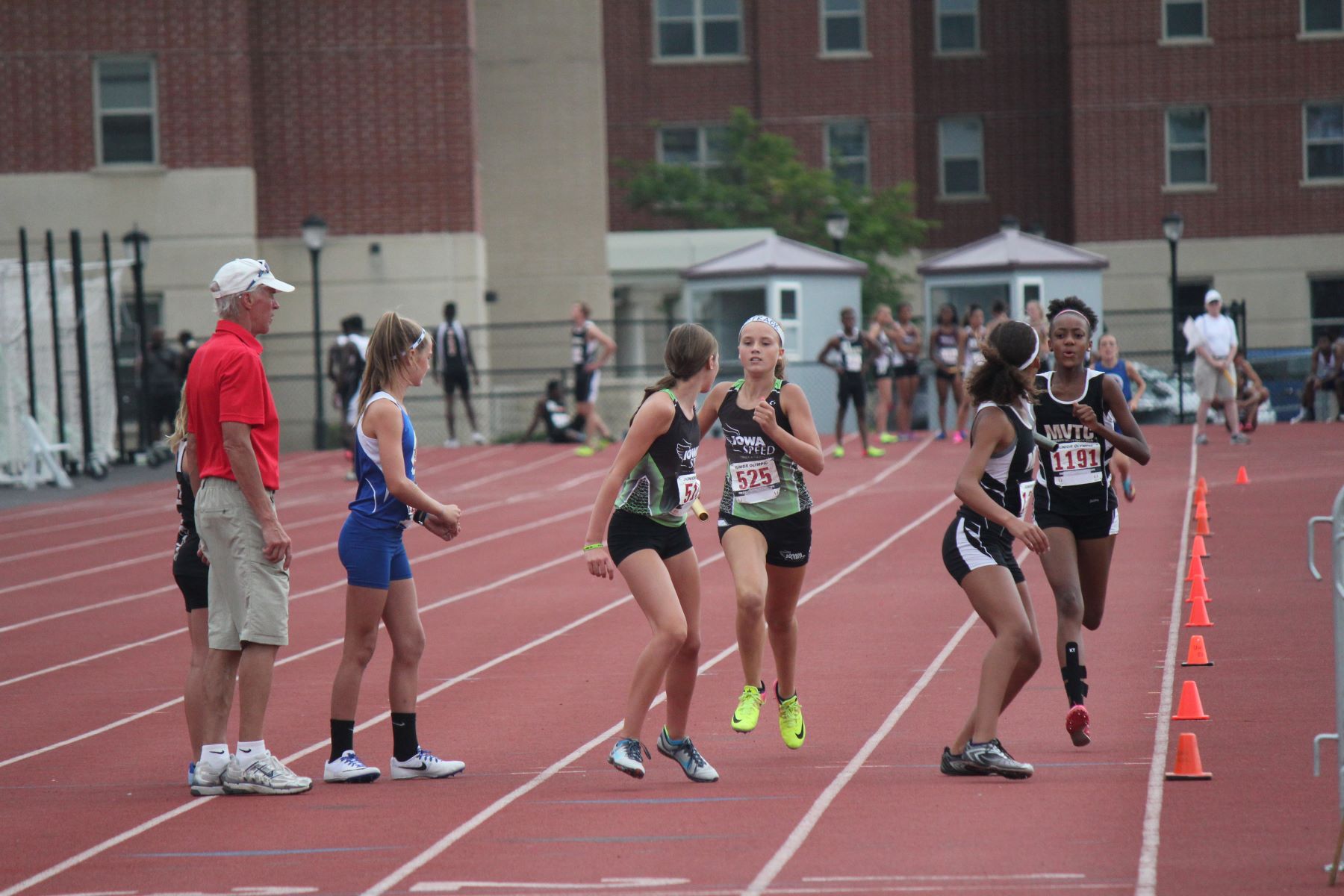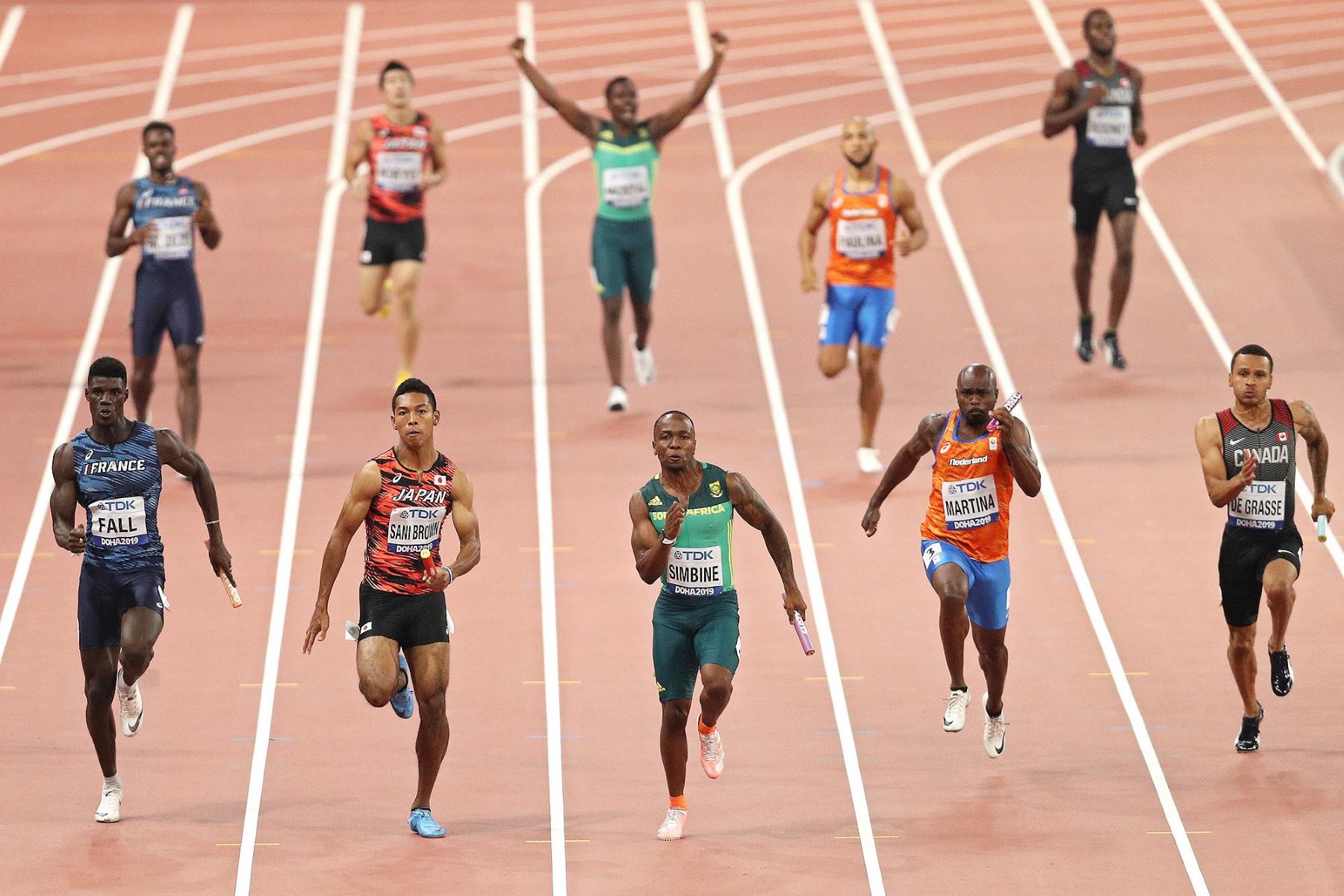

Featured
What Is Relays In Track And Field
Published: September 6, 2023
Learn about relays in track and field, from the basics to advanced techniques. Discover the importance of teamwork and strategy in this exciting featured event.
Introduction
The sport of track and field is filled with excitement, speed, and athleticism. Among its various events, relay races hold a special place, captivating both participants and spectators alike. Relay races involve a team of athletes working together to complete a designated distance, passing a baton from one runner to the next. It is a test of speed, skill, coordination, and teamwork.
Relay races have a long and rich history, dating back to ancient civilizations. Throughout the years, they have evolved into a prominent and thrilling event in modern track and field. These races require athletes to exhibit not only individual strength and speed, but also the ability to seamlessly exchange the baton and maintain a cohesive rhythm.
There are several different types of relay races, each with its own unique rules and regulations. From the traditional 4x100m relay to the longer distances like the 4x400m relay, these races offer different challenges and strategic considerations. Relay teams must adhere to specific guidelines regarding baton passing, lane assignments, and disqualification rules to ensure fair competition.
In this article, we will explore the world of relays in track and field, delving into their history, types, rules, team compositions, strategies, and famous races. Additionally, we will discuss the importance of training and preparation for relay races, as well as the records that have been set in this thrilling event. Whether you are an athlete, a coach, or simply a fan of track and field, this article will provide a comprehensive overview of relays and the excitement they bring to the sport.
Definition of Relays in Track and Field
In track and field, relays are a form of racing event where a team of athletes work together to cover a specified distance. The primary objective of relay races is to complete the designated distance in the shortest possible time by passing a baton from one runner to another within a designated exchange zone. Unlike individual races, such as sprints or distance runs, relays require athletes to combine their individual efforts to achieve success.
The essence of relays lies in the seamless and efficient transfer of the baton from one runner to the next. The baton serves as a symbolic representation of the team’s progress and success. Passing the baton requires precise timing, coordination, and synchronization between the runners to maintain momentum and minimize the time lost during the exchange.
Relay races are known for their fast-paced and highly competitive nature. The intensity of the race builds as each team member strives to maintain or enhance their team’s position. The final runner, commonly referred to as the anchor, plays a crucial role in determining the outcome of the race, as they have the opportunity to make up ground or solidify their team’s lead.
Relays offer a unique dynamic in track and field, as they not only showcase individual speed and skill but also emphasize teamwork and collaboration. Athletes must possess a combination of raw speed, endurance, and exceptional baton-handling capabilities. Each member of the relay team has a specific role to play and contributes to the overall success of the team.
Relays are not just limited to track and field events. They also have a presence in other sports, such as swimming, skiing, and even video gaming. In each case, the fundamental principles of relays remain the same: teamwork, efficient baton passing, and striving for the fastest possible time.
As we delve deeper into the world of relays in track and field, we will explore the history, the various types of relay races, the rules and regulations, strategic considerations, and the records that have been set in this thrilling sport.
History of Relays in Track and Field
The relay races we know today in track and field have a rich history that dates back to ancient civilizations. The concept of relays can be traced back to ancient Greece, where the sport of athletics held great cultural and religious significance.
One of the earliest recorded instances of relay races can be found in the ancient Olympic Games, which originated in Olympia, Greece, around the 8th century BCE. These ancient relay races were called “lampadedromia,” and they involved teams of runners passing a torch to each other in a race towards the finish line.
The Romans also embraced relay races, adapting them from Greek traditions. They introduced “javelin relays,” where the baton was replaced by a javelin that was handed from one runner to the next. This added an element of athleticism and coordination to the races.
As track and field sports evolved and became more organized in the 19th century, relay races gained popularity. In the early 20th century, relay races became a staple event in major track and field competitions, such as the Olympics and the World Athletics Championships.
The first documented 4x100m relay race took place at the 1912 Summer Olympics in Stockholm, Sweden. It quickly became one of the most anticipated events, captivating athletes and spectators alike. Over time, other relay distances, such as the 4x400m and the medley relay, were introduced, adding variety and excitement to the sport.
The popularity of relay races continued to grow throughout the 20th century, with more countries participating and setting new records. In the 1990s, mixed-gender relays emerged as a new addition to the track and field calendar, showcasing equal opportunity and collaboration between male and female athletes.
Today, relay races remain an integral part of track and field competitions at all levels, from grassroots youth events to international tournaments. They continue to captivate audiences, with athletes pushing the boundaries of speed and teamwork.
As we delve deeper into the world of relays in track and field, we will explore the different types of relay races, the rules and regulations governing them, the strategies employed by teams, and the famous races and records that have cemented the legacy of relay racing in the sport of track and field.
Types of Relay Races
The world of track and field offers a variety of relay races, each with its own unique distances and characteristics. Here, we will explore some of the most common types of relay races that are contested at various levels of competition.
- 4x100m Relay: The 4x100m relay, also known as the sprint relay, is one of the most exciting and high-speed events in track and field. It consists of a team of four runners, each covering a distance of 100 meters. The baton exchange between runners must take place within a designated exchange zone.
- 4x400m Relay: The 4x400m relay, also known as the middle-distance relay, is a test of speed, endurance, and strategy. Each member of the team runs 400 meters before handing off the baton to the next runner. This race requires athletes to balance their speed and pacing, as well as perform precise baton exchanges.
- Distance Medley Relay: The distance medley relay consists of a team of four runners, each running a different distance. The first runner covers 1,200 meters, the second runner covers 400 meters, the third runner covers 800 meters, and the anchor runner covers 1,600 meters. This relay showcases both speed and endurance as athletes vary in their individual specialties.
- Swedish Relay: The Swedish relay is an exciting variation of a relay race that combines different distances in a single event. It typically consists of four legs, with the first leg covering 100 meters, the second leg covering 200 meters, the third leg covering 300 meters, and the anchor leg covering 400 meters. This relay requires teams to strategize and allocate their strongest runners to the appropriate legs.
- 4x800m Relay: The 4x800m relay is a middle-distance relay that tests both speed and endurance. Each runner covers 800 meters before handing off the baton to the next teammate. This relay requires athletes to balance their pace and maintain a strong finish to secure a competitive time for their team.
These are just a few examples of the types of relay races commonly contested in track and field. Other variations include mixed-gender relays, where male and female athletes compete together in a team, and shuttle relays, where relay legs are run back and forth along a straight track.
While the distances and order of the legs may vary, the essence of relay races remains the same – a team effort to achieve a common goal. Each type of relay race presents its own set of challenges and strategies, making for thrilling competitions and unforgettable moments in the world of track and field.
Rules and Regulations of Relay Races
Relay races in track and field are governed by specific rules and regulations to ensure fair competition and maintain the integrity of the event. Athletes and teams must adhere to these guidelines to avoid disqualification and penalties. Here, we will outline some of the key rules and regulations of relay races.
- Baton Passing: The baton must be passed within a designated exchange zone, typically marked on the track with a series of lines or triangles. The baton must be carried throughout the race and cannot be thrown or dropped. The exchange must take place within the exchange zone, and the outgoing runner may not touch the baton until it has been handed off by the incoming runner.
- Zone Violations: Stepping on or outside the exchange zone lines during baton exchange will result in disqualification. Athletes must be cautious to ensure they do not impede other runners or interfere with the smooth transition of the baton.
- Lane Assignments: In relay races contested on a track with multiple lanes, each team is assigned a specific lane. Athletes must stay within their respective lanes during their leg of the race. Failing to stay within the assigned lane can lead to disqualification or penalties.
- False Starts: Similar to individual sprint events, relay races also adhere to false start rules. Teams can be disqualified if a runner or runners commit a false start before the race begins. Athletes must wait for the starter’s signal to initiate their leg of the race.
- Uniforms and Batons: Athletes must wear the designated team uniform and carry a relay baton during their leg of the race. The baton must be of the specified dimensions and weight. It is imperative that athletes secure the baton properly while running to prevent any accidental drops or disqualification.
- Disqualifications: Relay teams can face disqualification if they violate any of the aforementioned rules or if any of their runners step out of their assigned lane during the race. Athletes must exercise caution and follow the rules to ensure that their team remains eligible for a competitive time.
It is important for athletes and teams to familiarize themselves with the specific rules and regulations of relay races, as they may vary slightly depending on the competition and governing body. Being knowledgeable about these guidelines can help teams strategize their baton exchanges, ensure compliance, and offer their best performance in this fast-paced and exhilarating event.
Relay Teams and Positions
Relay races in track and field require a team of athletes working together cohesively to achieve the best possible time. Each member of the relay team has a specific position and role to play in the race. Understanding these positions and their responsibilities is crucial for a successful relay team. Let’s take a closer look at the relay team positions:
- Lead Off Runner: The lead off runner, also known as the first leg, starts the race for the team. They are responsible for getting a strong start, accelerating quickly, and setting the pace for the team. The lead off runner must possess a combination of speed, agility, and strong starting technique.
- Second Leg Runner: The second leg runner receives the baton from the lead off runner and must maintain the team’s speed and momentum. They typically need to accelerate quickly and execute a smooth baton exchange with the lead off runner. The second leg runner must have good sprinting technique, as well as the ability to handle the pressure of the baton exchange.
- Third Leg Runner: The third leg runner, often considered a crucial position in relay races, maintains the team’s momentum and prepares for the anchor leg. They need to continue the team’s speed and acceleration and execute a precise baton exchange with the second leg runner. The third leg runner must possess both speed and endurance, as they often cover a longer distance than the lead off or second leg runners.
- Anchor Leg Runner: The anchor leg runner is the final runner in the relay team. They are responsible for bringing the team’s race to a strong finish. The anchor leg runner often has the opportunity to make up ground or solidify the team’s lead. They must possess exceptional speed, endurance, and mental fortitude, as they carry the weight of the team’s success on their shoulders.
The order of the relay team positions may vary depending on the strategy and strengths of the individual athletes involved. Coaches analyze the capabilities of their team members and make decisions based on factors such as speed, endurance, and baton-handling skills.
In addition to the four primary relay team members, countries and competitions also have designated substitute runners who may step in if needed due to injury, illness, or other unforeseen circumstances. These substitute runners play a crucial role in maintaining the team’s competitive performance.
Being part of a relay team requires not only individual skill but also effective communication, trust, and synchronization among teammates. Successful relay teams spend extensive time practicing baton exchanges, perfecting their techniques, and developing a sense of unity and cohesion.
Understanding the roles and responsibilities of each relay team position is essential for athletes aspiring to compete in relay races. By mastering their individual positions and working together as a team, athletes can maximize their performance and enjoy the exhilarating experience of relay racing in track and field.
Strategies and Tactics in Relay Races
Relay races in track and field require more than just individual speed and skill. Strategic planning and effective tactics can make a significant difference in the outcome of a race. Here, we will explore some of the common strategies and tactics employed by relay teams to enhance their performance:
- Smooth Baton Exchanges: One of the most critical aspects of relay racing is the seamless transition of the baton between runners. Teams must practice and perfect their baton exchange technique to minimize the time lost during the handoff. Precise timing, accurate targeting, and effective communication between runners are essential for successful exchanges.
- Pacing and Acceleration: Relay teams must develop a cohesive pacing strategy. Each runner needs to understand their optimum speed and maintain it throughout their leg of the race. Coordinating acceleration during baton exchanges is also crucial to maintain momentum and minimize any disruption in the team’s speed.
- Strategic Positioning: Determining the order of the relay team members can be a strategic decision based on the strengths and weaknesses of each athlete. The fastest runner may be placed in the anchor leg to gain a competitive advantage in the final stretch. Coaches may also strategically position their strongest runners in the second and third legs to capitalize on key moments of the race.
- Running the Tangent: In relay races that involve multiple lanes, like the 4x100m, understanding and running the tangent can shave off valuable milliseconds. Each runner should aim to run the shortest distance possible by hugging the innermost part of their assigned lane, thus maximizing speed and conserving energy.
- Effective Communication: Relay teams rely on effective communication to ensure successful baton exchanges and overall coordination. Non-verbal cues, such as hand signals or eye contact, are often used to indicate readiness for a handoff. Clear and concise verbal communication is also essential during practice and warm-ups to fine-tune synchronization.
- Reacting to Race Scenarios: Relay races are unpredictable, and teams must be prepared to adapt to different scenarios. This includes adjusting the strategy based on the race position, readiness of competitors, and any unexpected challenges or opportunities that may arise during the race. The ability to make quick decisions and stay composed under pressure is vital.
Successful relay teams combine these strategies and tactics with proper training, coordination, and teamwork. The ability to execute smooth baton exchanges, maintain pace, and strategically position runners can give a team a competitive edge in a close race.
It’s important for relay teams to analyze and learn from past performances, identify areas for improvement, and continuously refine their strategies. Each race provides an opportunity to develop a deeper understanding of team dynamics, individual strengths, and areas that need attention.
Ultimately, relay races require a delicate balance between individual talent and teamwork. By employing effective strategies and tactics, relay teams can maximize their potential and create thrilling moments on the track.
Famous Relay Races and Records
Throughout the history of track and field, there have been numerous memorable relay races and remarkable records set by extraordinary athletes. These races and records have left an indelible mark on the sport and continue to inspire future generations. Let’s explore some of the famous relay races and the records that have made their mark:
1. The Miracle on Ice: One of the most iconic relay races in Olympic history is the ‘Miracle on Ice’ at the 1980 Winter Olympics in Lake Placid. The United States men’s ice hockey team, made up of amateur and collegiate players, defeated the heavily favored Soviet Union team in an exhilarating display of skill, determination, and teamwork.
2. The Women’s 4x100m World Record: At the 2012 London Olympics, the United States women’s relay team shattered the previous world record in the 4x100m relay. The team, consisting of Tianna Madison, Allyson Felix, Bianca Knight, and Carmelita Jeter, blazed the track in a time of 40.82 seconds, electrifying the crowd and showcasing their incredible speed and teamwork.
3. The Men’s 4x400m World Record: In 1998, the United States men’s relay team consisting of Jerome Young, Antonio Pettigrew, Tyree Washington, and Michael Johnson set the world record in the 4x400m relay at the World Athletics Championships in Athens, Greece. They completed the race in a stunning time of 2 minutes and 54.29 seconds, showcasing remarkable speed and baton exchanges.
4. The Distance Medley Relay World Record: In 2015, a team made up of Brycen Spratling, Brandon Johnson, Erik Sowinski, and Penn State’s Brannon Kidder set the world record in the distance medley relay at the Millrose Games in New York City. They completed the event in a blistering time of 9 minutes and 19.93 seconds, showcasing exceptional speed and combined endurance.
5. The Jamaican Sprint Dominance: In recent years, Jamaica has established itself as a force to be reckoned with in sprint relay races. Led by legendary athletes such as Usain Bolt, Yohan Blake, Asafa Powell, and Shelly-Ann Fraser-Pryce, the Jamaican relay teams have set multiple world records and claimed numerous Olympic and World Championship gold medals, thrilling spectators with their exceptional speed and impeccable baton exchanges.
These are just a few examples of the famous relay races and records that have left a lasting impact on track and field. These achievements showcase the incredible talent, dedication, and teamwork exhibited by athletes from around the world. They continue to inspire future generations of athletes to push the boundaries of human performance in relay races.
As track and field progresses, new races will be held, and records are likely to be broken, but the legacy of these famous relay races and records will remain an integral part of the sport’s history and inspire athletes for generations to come.
Training and Preparation for Relay Races
Training and preparation play a crucial role in the success of relay teams in track and field. Athletes must have a solid foundation of individual skills while also focusing on the specific requirements of relay races. Here are some key aspects of training and preparation for relay races:
1. Individual Skill Development: Each member of a relay team should work on developing their individual speed, endurance, and technique. This includes sprint training, endurance runs, strength and conditioning exercises, and drills to improve baton-handling skills. Athletes must dedicate time to refine their running form, start technique, and acceleration.
2. Baton Exchanges: Perfecting the baton exchange is essential for relay success. Teams should practice various baton-passing techniques to find the most efficient and reliable method for their team. This involves precise timing, trust, and coordination between the outgoing and incoming runners. Regular practice is crucial to establish a smooth and seamless exchange.
3. Team Bonding and Communication: Relay teams should foster a strong sense of camaraderie and unity. Building trust and effective communication among team members is vital to ensure smooth baton exchanges and seamless transitions. Regular team meetings, practice sessions, and supportive team dynamics contribute to a cohesive and successful relay team.
4. Race Strategy: Coaches and athletes should formulate a race strategy that maximizes the team’s strengths. This may involve deciding the order of the relay team members, determining pacing strategies for each leg, and identifying the optimal moment for acceleration during the baton exchanges. Analyzing competitors and adapting the strategy based on race scenarios are also essential components of race preparation.
5. Relay-Specific Drills: Relay teams should incorporate specific drills into their training sessions to simulate race scenarios and improve coordination. These drills may include baton-handling drills, relay-specific speed workouts, practicing exchanges at different speeds, and running simulations of different race situations. Consistent repetition of these drills helps fine-tune skills, build muscle memory, and improve overall performance.
6. Mental Preparation: Relay races require a strong mental mindset. Athletes should develop mental strategies to handle the pressure, stay focused, and remain confident during the race. Visualization techniques, mental rehearsal of baton exchanges, positive self-talk, and mindfulness practices can enhance mental resilience and help athletes perform at their best when it matters most.
7. Race Simulation: Incorporating race simulations into training is essential for practicing baton exchanges, refining tactics, and familiarizing athletes with the intensity of competition. These simulations allow teams to identify areas for improvement, fine-tune strategies, and build confidence leading up to the actual race.
8. Recovery and Injury Prevention: Proper recovery and injury prevention are vital for ensuring that athletes stay in optimal condition. Adequate rest, nutrition, hydration, and regular strength and conditioning exercises are key components of recovery. Teams should also implement injury prevention strategies, such as warm-up routines, stretching, and mobility exercises, to minimize the risk of injuries during training and competitions.
By focusing on individual skill development, practicing baton exchanges, fostering team unity, and implementing strategic training methods, relay teams can enhance their performance. The dedication, hard work, and attention to detail in training and preparation contribute to a team’s success on the track.
Conclusion
Relay races in track and field exemplify the essence of teamwork, speed, and strategy. These races have a long and storied history, dating back to ancient civilizations, and have evolved into thrilling and highly anticipated events in modern track and field.
Understanding the rules, types, and positions in relay races is essential for athletes and fans alike. It requires precise baton exchanges, seamless coordination, and strategic decision-making to achieve success. From the 4x100m sprint relay to the distance medley relay, each race offers its own unique challenges and opportunities for teams to showcase their skills and athleticism.
Training and preparation are at the heart of relay success. Athletes must focus on both individual skill development and perfecting the art of baton exchanges. Team cohesion, effective communication, and race strategy are also key factors in producing winning performances on the track.
The world of relay races has seen remarkable accomplishments and records set by extraordinary athletes. Famous relay races, such as the ‘Miracle on Ice’ and notable world records in various relay events, have left an indelible mark on the sport, inspiring generations of athletes to strive for greatness.
As the sport of track and field continues to evolve, relay races will remain an integral and thrilling aspect of the competition. They serve as a testament to the power of teamwork, the pursuit of speed, and the spirit of athletic excellence.
Whether an athlete participating in a relay race, a coach developing strategies and training plans, or a spectator cheering from the stands, relay races in track and field offer a sense of unity, excitement, and the opportunity to witness incredible feats of athleticism. They truly embody the essence of teamwork and competition, leaving an everlasting impact on the world of sports.
